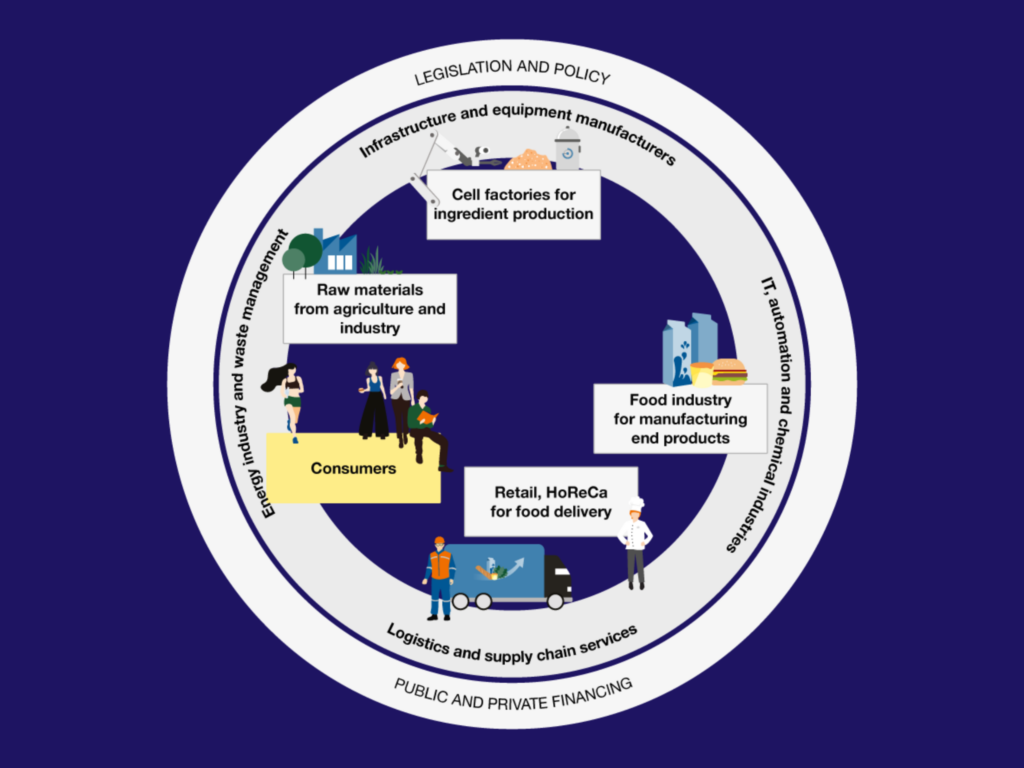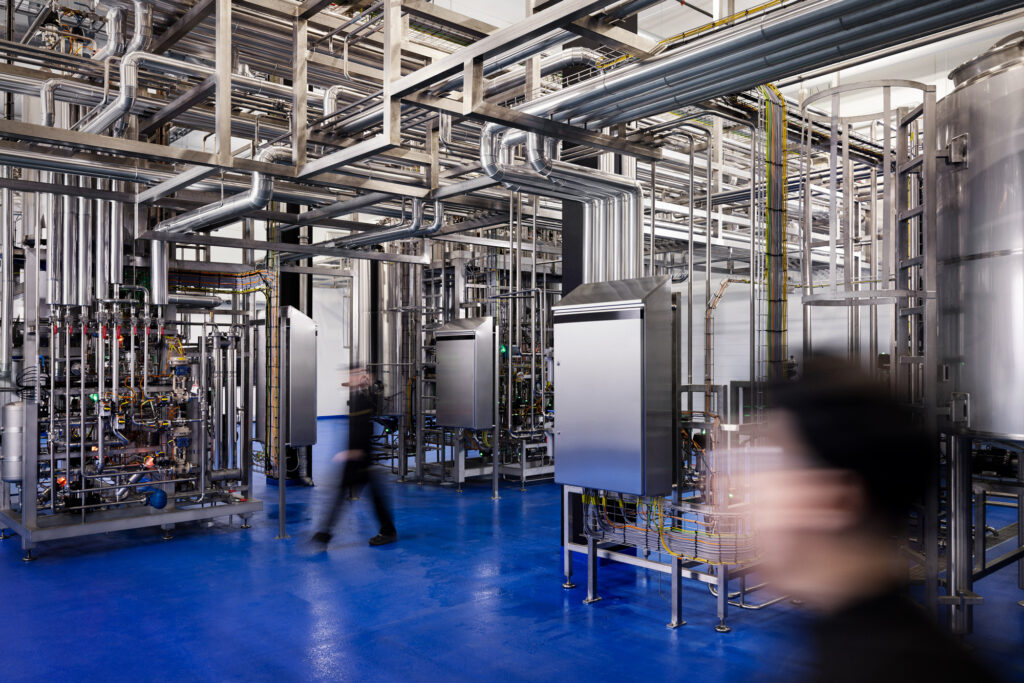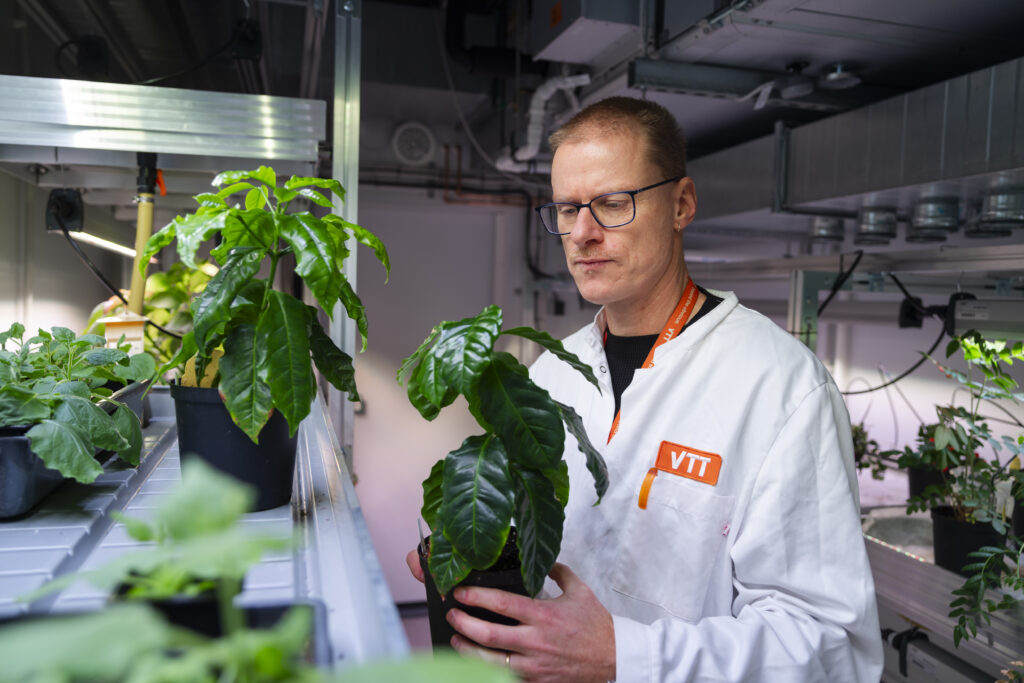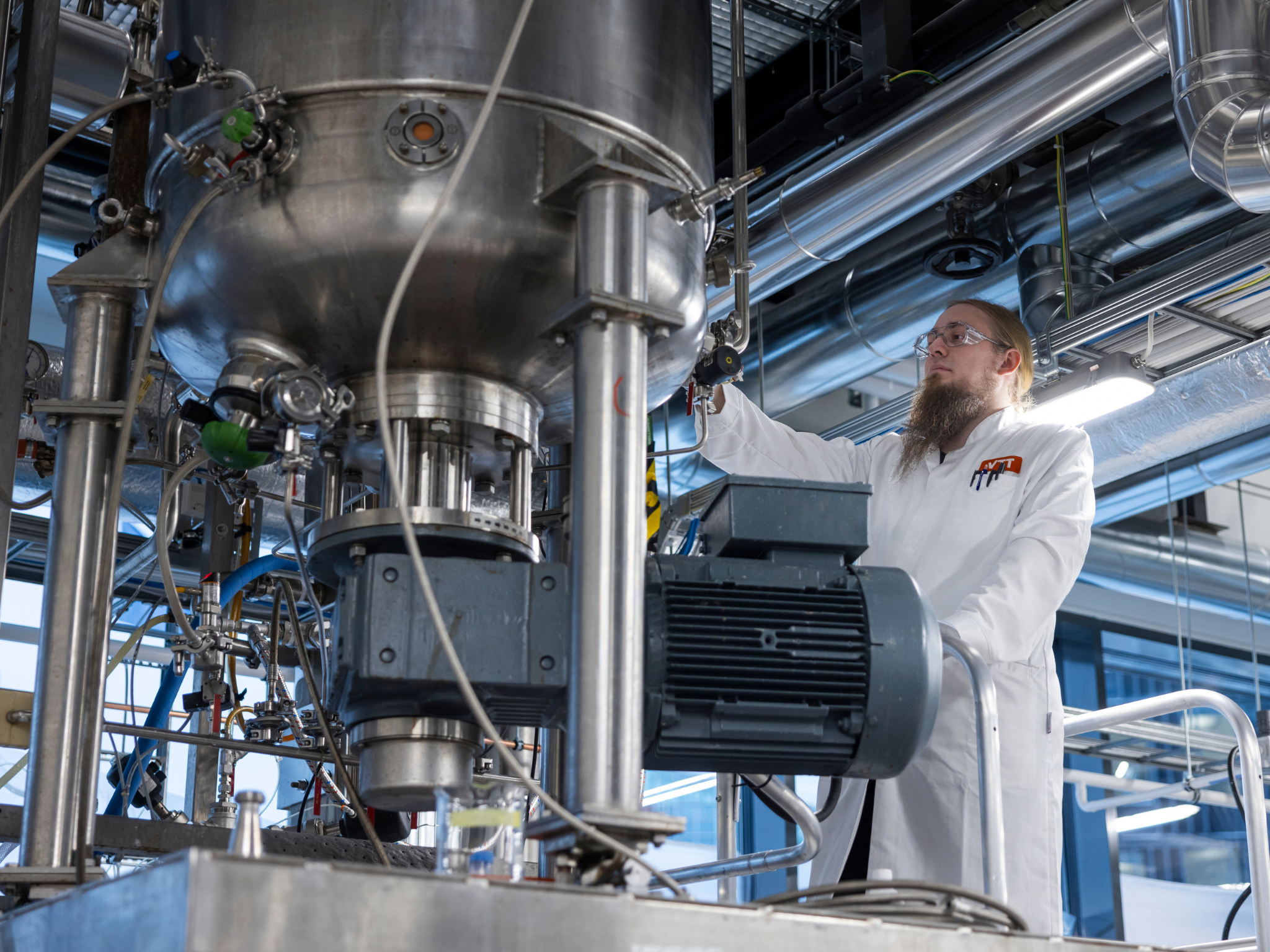6 Mins Read
Finland is well-placed to become a cellular agriculture leader, with its export potential set to reach €1B in the next decade – but funding and regulation challenges must be addressed.
In a decade’s time, cultivated meat, cell-based cocoa, and carbon-derived proteins could amount to €1B in export value in Finland, according to a government-commissioned report.
The country’s natural resources and biotech expertise leave it on the cusp of becoming a global leader in the cellular agriculture field, which involves the use of microbial, plant and animal cell cultures to produce proteins, fats, coffee and cocoa (among other products) in bioreactors.
While a majority of young adults in Finland (83%) have a positive or neutral attitude towards new technologies in food production, there are several challenges that the ecosystem needs to address before it can reach its market potential, according to researchers at the VTT Technical Research Center of Finland, the Natural Resources Institute Finland, and University of Helsinki.
Commissioned by the Ministry of Agriculture and Forestry and Business Finland, the experts lay out a policy roadmap to help Finland become a leader in this sector.
Finland’s future food system will blend cellular and traditional agriculture

The country is already home to food tech leaders like Solar Foods (maker of Solein gas protein), Onego Bio (which makes egg proteins via precision fermentation), and Enifer (producer of Pekilo mycoprotein).
“One of Finland’s biggest challenges currently is the lack of capital, which limits the growth opportunities of cellular agriculture,” said VTT’s Emilia Nordlund, who led the study. “Building production facilities requires large investments, and success will not come without government support to accelerate investments and realise venture capital investments.”
The nation is home to a variety of carbohydrate-rich side streams like straw, sawdust, wood chips, and grass biomass, which could be utilised as feedstocks for cellular agriculture. For instance, if more than half of the straw were used as a sugar source for microbes, the amount of food produced would be enough to meet the annual protein needs of the population.
“The future food system will be based on the interplay between modern agriculture and cellular agriculture, utilising circular economy solutions,” said Päivi Nerg, state secretary from the agriculture ministry. “We must identify the necessary change paths and ensure that measures consider the entire chain, from farmers to consumers and other stakeholders.”
Teija Lahti-Nuuttila, executive director of Business Finland, added: “Finnish companies should recognise their strengths as part of emerging new value networks and build their competitiveness in the long term together with research organisations. Business Finland is already currently funding ambitious cellular agriculture RDI projects, so there is no need to wait for a separate programme.”
The researchers have come up with an eight-point plan to tackle the bottlenecks of Finland’s cellular agriculture industry and fulfil the estimated annual export value of €500M to €1B by 2035.
1) Ramp up major infrastructure investments
The report states that the country needs an action plan to increase venture capital funding and attract international investor interest, especially for small- and medium-sized enterprises. The public sector can “provide support that signals the realisation of private financing”.
Infrastructure investments are critical to enabling new value chains, and the government is being urged to create risk financing and loan instruments to enable factory financing.

2) Ease EU novel food regulation
One of the biggets bottlenecks for the cellular agriculture industry concerns regulation – the EU’s novel food stringent framework has “significantly” slowed progress and left it playing catch-up with other markets. The report suggests setting up an office in Finland to support startups with the novel food process through advice and financial backing.
This office would actively influence the EU to expedite and ease the adoption of novel technologies, something that Finnish policymakers must support. Reviewing agricultural subsidies is also key, since these novel food technologies aren’t covered by any EU subsidies yet.
3) Build a €100M R&D programme
Finland should introduce a five-year, €100M R&D programme that would produce future food innovations, making use of the nation’s technological expertise and abundant natural resources.
The multidisciplinary initiative would ensure the development of value chains at the regional level too, while facilitating long-term development and economic growth. In addition, it will help the country achieve its target of increasing R&D spending to 4% of the GDP.

4) Establish a future food ministry
The researchers propose creating a joint working group or organisation of ministries to develop the future food system, support the R&D programme, and promote cross-sector collaboration. This Ministry of Future Food would enable a broad perspective for a common goal to develop both conventional and cellular agriculture, boost the value chain, and enable competitiveness.
Another solution would be to establish a food innovation centre that would take overall responsibility for the implementation of R&D activities, including political decisions.
5) Expand education to secure future experts
While Finland has a sufficient knowledge base, the critical mass is not enough – there should be closer cooperation between education and training organisations to produce experts for the food sector. The report says it is “critical” that the number of industrial biotech experts increases in Finland.
The government’s Growth Programme goal to increase food experts also requires training people about exports. Education programmes focused on future solutions can enable the internationalisation of an expert corps in the country. The talent environment should embrace even those with limited proficiency in Finnish.

6) Conduct public tastings to educate consumers
The report calls for the spread of “strong and inspiring stories” about the future food system to enhance consumer knowledge and acceptance. One way to do this would be to create a ‘showroom’ to present novel foods and provide examples of how cellular agriculture can work in tandem with conventional farming.
Moreover, Finland should follow the lead of European states like the Netherlands to allow public tastings of these foods before they go through the lengthy approval process – the government needs to create a national model to enable these events, which would increase the industry’s chances of success and dispel any prejudices from consumers.
7) Incorporate primary production in the novel food industry
Finland’s rich feedstock supply can help the cellular agriculture industry, though there are challenges with production, processing, storage, and logistics. This is why cooperating with primary producers is crucial – for them, this industry can open up new business opportunities. According to the report, business models and practical trials need to be developed to create this value for primary producers.
Further, the opportunities for cooperation can strengthen the role of agricultural entrepreneurs and the financial profitability of farms when underutilised feedstocks are converted into a business.

8) Target export support functions for cell-based food
While local production and related product exports are key to the growth and export potential of cellular agriculture in Finland, the equipment and technology exports, IP licensing, and value chains and factories built by Finnish companies overseas can play a crucial role too.
Given that this is a young, startup-driven market with a wide range of opportunities, export support functions should be built specifically to meet the needs of the sector to ensure that growth is effectively enabled.



